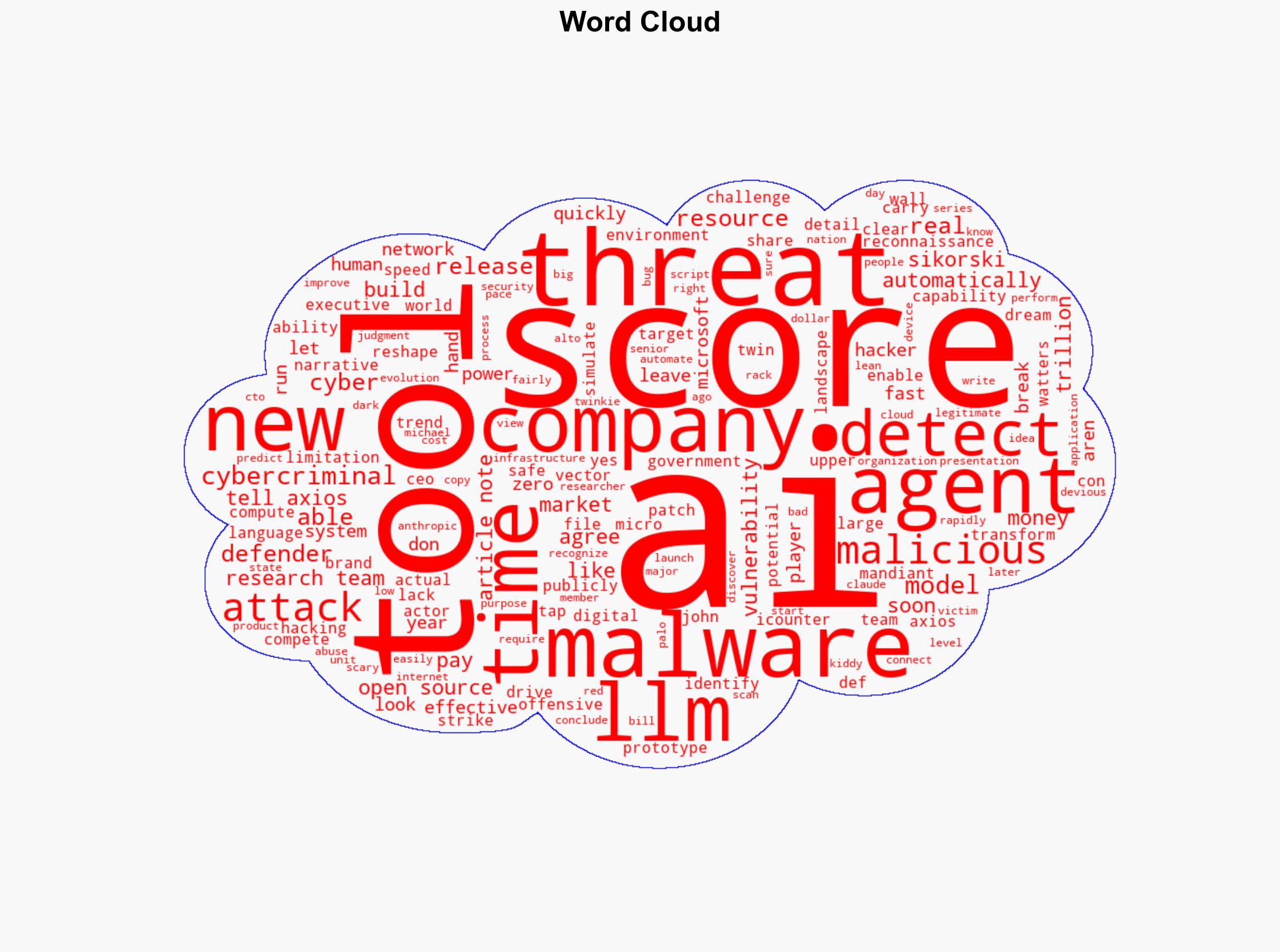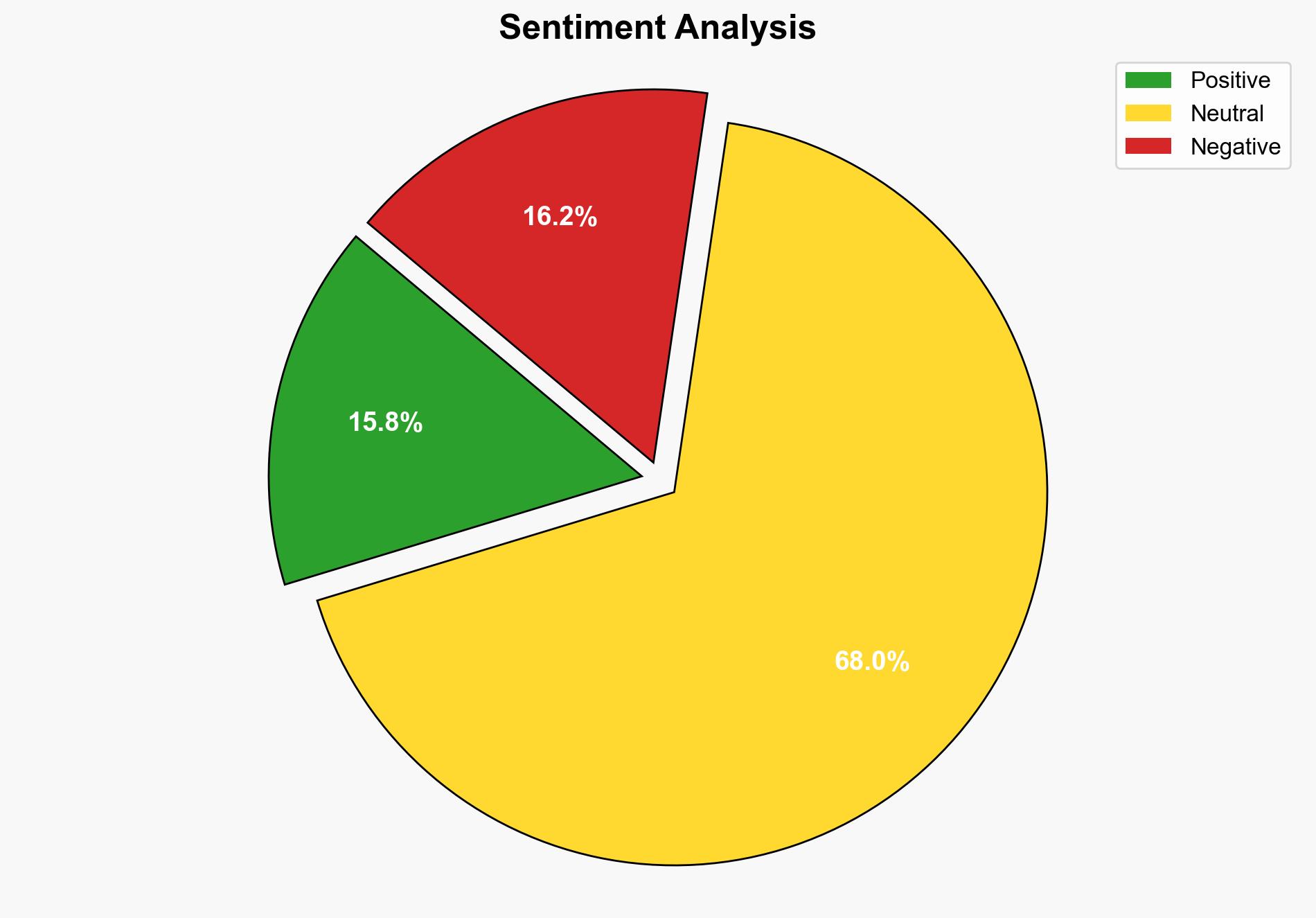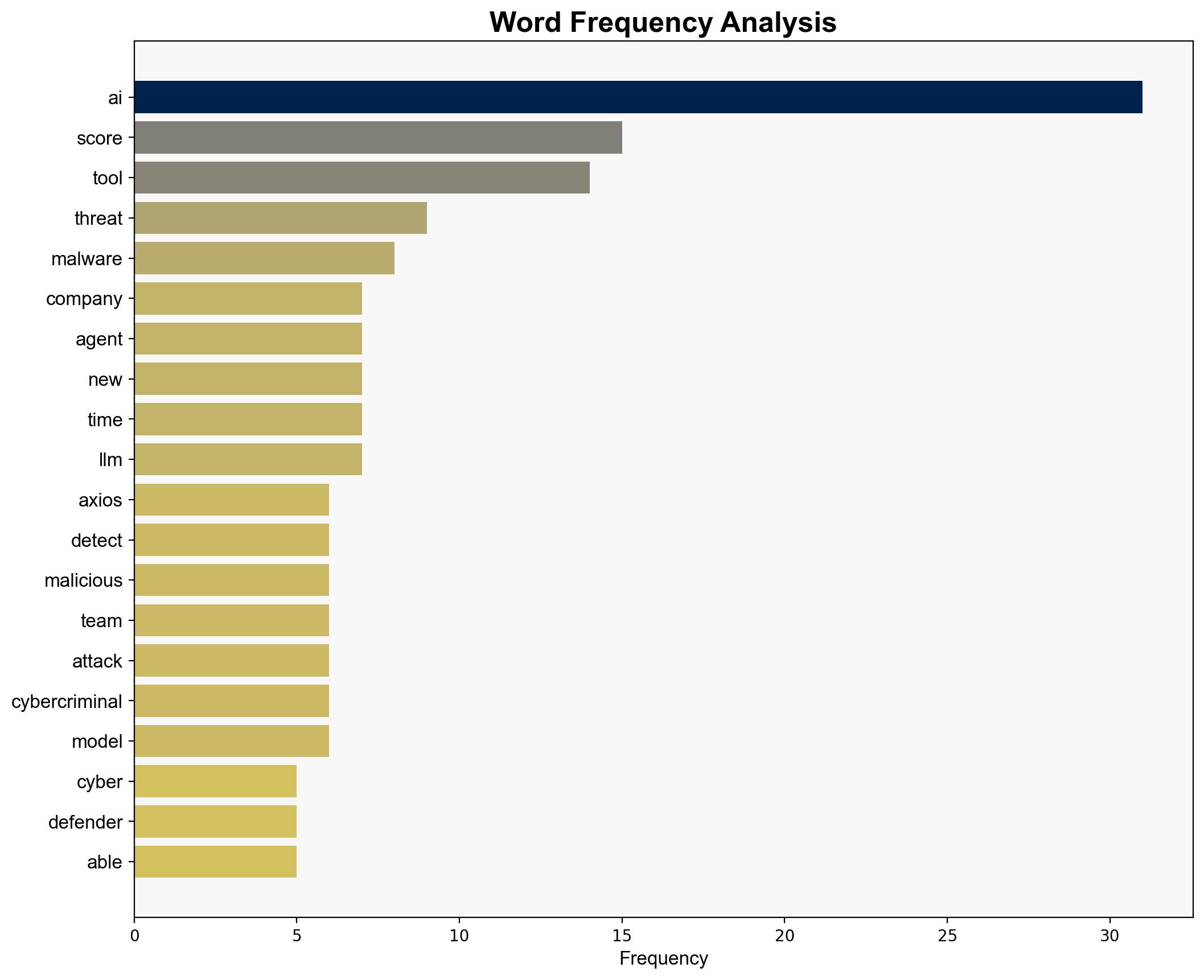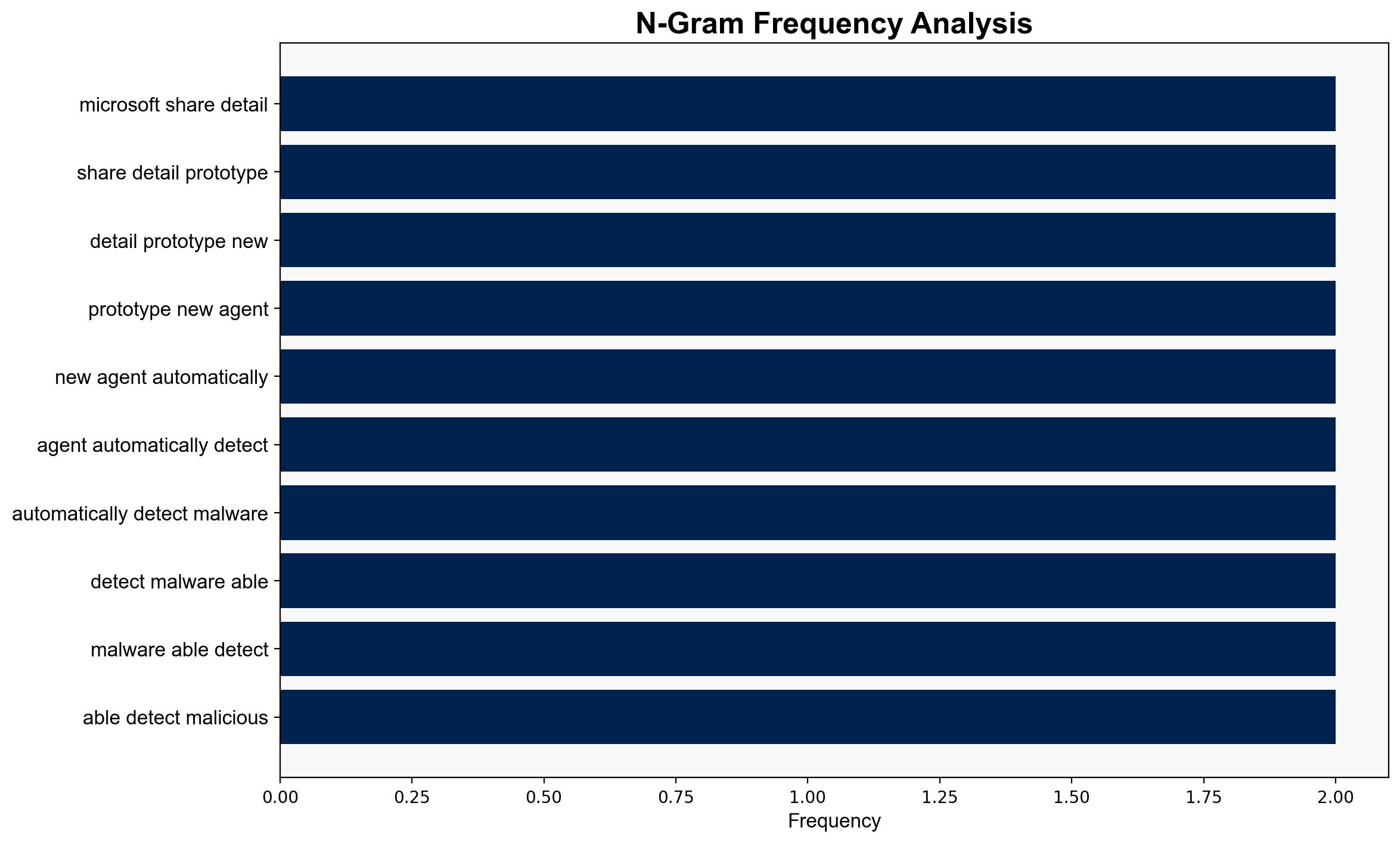AI Is Reshaping Hacking No One Agrees How Fast – Slashdot.org
Published on: 2025-08-16
Intelligence Report: AI Is Reshaping Hacking No One Agrees How Fast – Slashdot.org
1. BLUF (Bottom Line Up Front)
AI is significantly altering the cybersecurity landscape, but the pace and impact of this transformation remain contested. The hypothesis that AI empowers defenders more than attackers is moderately supported, given current limitations in offensive AI capabilities. Strategic recommendation: Enhance AI-driven defense mechanisms while monitoring developments in AI-enabled offensive tools. Confidence level: Moderate.
2. Competing Hypotheses
1. **AI Benefits Defenders More Than Attackers**: AI advancements provide cybersecurity defenders with superior tools for detecting and mitigating threats, as evidenced by Microsoft’s prototype agent and Trend Micro’s digital twin capabilities.
2. **AI Equally Empowers Attackers and Defenders**: Cybercriminals leverage open-source AI models to develop new attack vectors, potentially offsetting the advantages gained by defenders. This is supported by the rapid improvement of large language models (LLMs) and their application in offensive scenarios.
Using the Analysis of Competing Hypotheses (ACH) 2.0, the first hypothesis is better supported due to the current technological and resource limitations faced by cybercriminals in deploying AI offensively.
3. Key Assumptions and Red Flags
– **Assumptions**:
– Defenders have more resources and access to advanced AI technologies than attackers.
– Current AI models have limitations in executing complex offensive operations autonomously.
– **Red Flags**:
– Rapid advancements in AI could quickly shift the balance, empowering attackers.
– Over-reliance on AI for defense may create vulnerabilities if AI systems are compromised.
– **Blind Spots**:
– Potential for undisclosed advancements in offensive AI capabilities by nation-states or well-funded criminal organizations.
4. Implications and Strategic Risks
– **Economic**: Increased costs for cybersecurity infrastructure as organizations invest in AI-driven defenses.
– **Cyber**: Escalation in AI-driven cyber warfare tactics, potentially leading to more sophisticated and frequent attacks.
– **Geopolitical**: Nations may engage in AI arms races, impacting global cybersecurity norms and policies.
– **Psychological**: Growing public concern over AI’s role in cybersecurity could influence regulatory and legislative actions.
5. Recommendations and Outlook
- Invest in AI research focused on defensive applications and threat intelligence sharing.
- Monitor advancements in AI offensive capabilities, particularly in open-source communities.
- Scenario Projections:
- Best Case: AI-driven defenses significantly reduce cyber threats, enhancing global cybersecurity.
- Worst Case: AI-enabled attacks outpace defenses, leading to widespread cyber disruptions.
- Most Likely: A balanced evolution where AI benefits both defenders and attackers, necessitating continuous adaptation.
6. Key Individuals and Entities
– John Watters
– Michael Sikorski
– Microsoft
– Trend Micro
– Axios
7. Thematic Tags
national security threats, cybersecurity, counter-terrorism, regional focus




